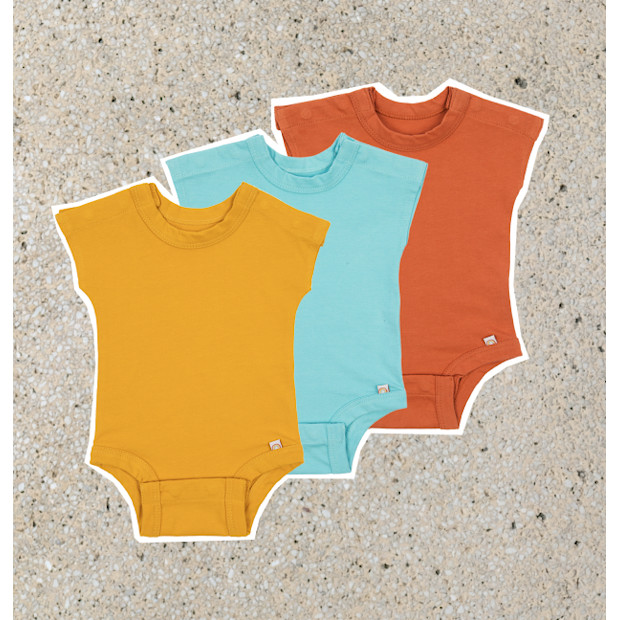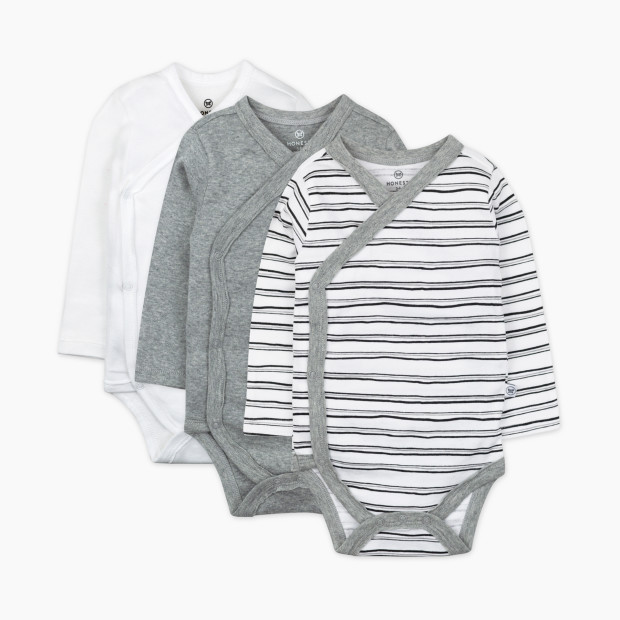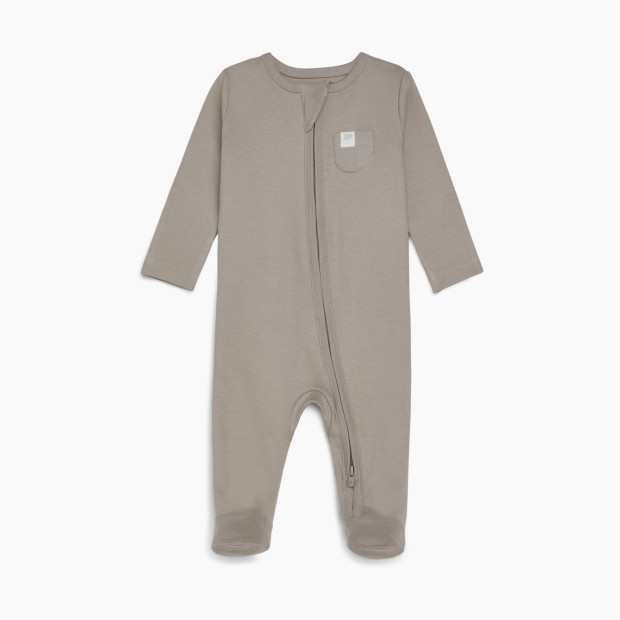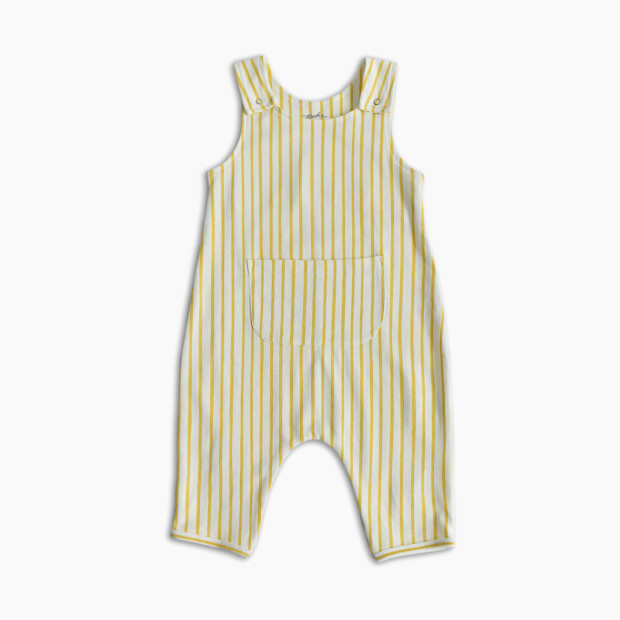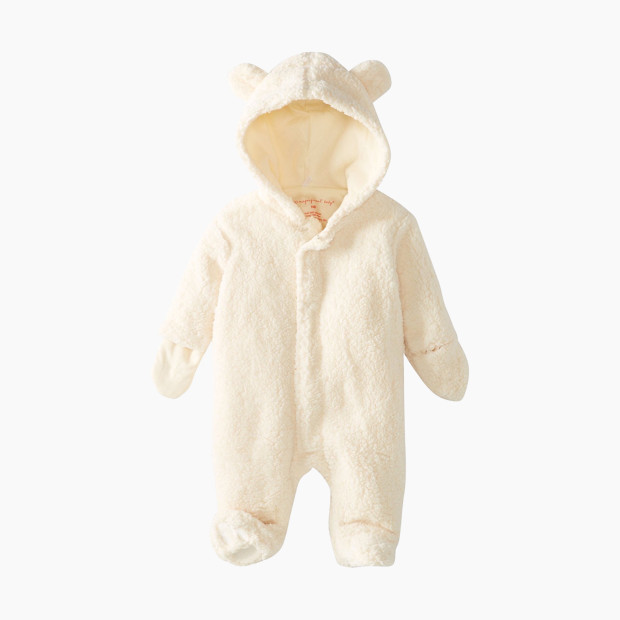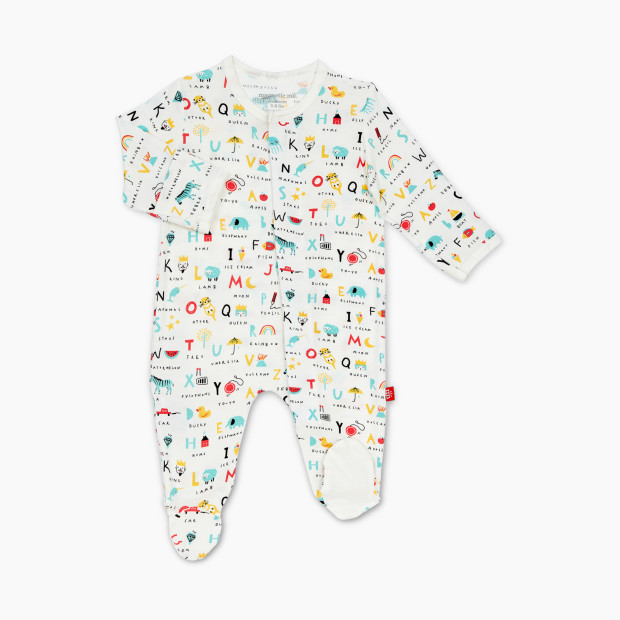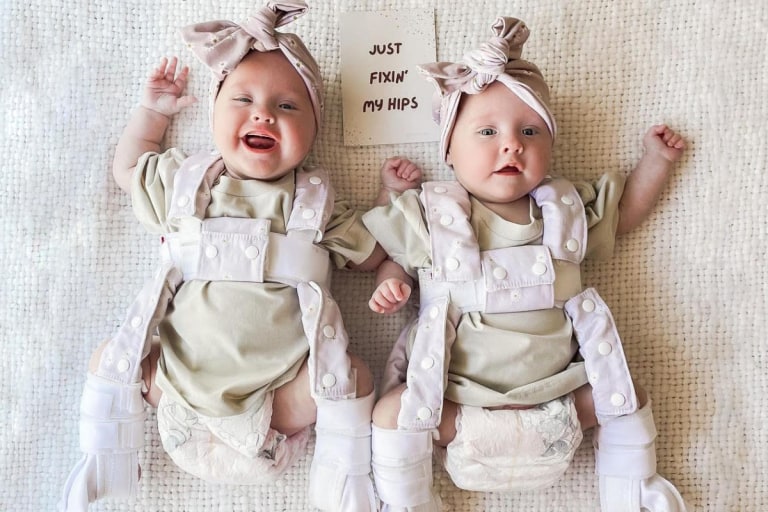
Best Adaptive Baby Clothes to Fit Medical Devices
These brands eliminate the struggle of finding clothes that fit specialty medical devices.

By Amylia Ryan
Getting a baby dressed isn’t necessarily the easiest thing in the world (especially once they start rolling!), and it can be even more challenging when medical equipment or disabilities are involved. Without the right clothes to accommodate your or baby’s needs, even the simplest diaper change can be a real hassle.
That’s why adaptive baby clothes are so important—the right adaptive features ensure comfort for little ones and ease of use for their caregivers. With all the other things you’ve got going on, especially if your baby is being treated for a medical issue, it makes all the difference to have something like clothing be easy and accommodating.
But finding adaptive clothing can be a challenge, too. It’s pretty rare for name brands or major retailers to offer a selection that works for medical devices like Pavlik harnesses, spica casts and gastrostomy tubes. To help, we’ve rounded up all the best adaptive baby clothes out there for a variety of needs. Here are our top picks.
Babylist’s Top Picks for the Best Adaptive Clothing for Babies
- Best Baby Clothes for Cranial Orthosis
- Best Baby Clothes for Gastrostomy Tubes
- Best Baby Clothes for Hip Dysplasia
- Best Baby Clothes for Parents with Disabilities
In This Article
What is adaptive clothing?
Adaptive clothes are specialized clothing for people with disabilities, certain medical issues or other differences who need special features in their clothes. Adaptive clothing can be anything from shirts and pants to socks, shoes and accessories.
When it comes to what adaptive features these clothes have, it depends on what they’re accommodating—they might include things like openings for medical equipment, Velcro or pull tabs for easy on and off, tag-free designs for sensory sensitivities or widened measurements to fit over harnesses or casts. That’s not an exhaustive list of all the types of adaptive apparel, but you get the idea.
And adaptive clothing for babies is just that: clothes in sizes preemie to 24 months that accommodate a range of special needs. Let’s look a little closer at what some of those special needs might be.
Who needs adaptive clothing?
There are a lot of different types of people—adults and children alike—who need specialized clothing, but some of the most common reasons why babies in particular might need adaptive apparel include:
- Cranial orthosis, or helmet molding therapy, for babies with plagiocephaly (flat spots that develop on their head from lying in one position too much).
- Gastrostomy tubes, or G tubes, for babies who have trouble eating, either due to birth defects, being born prematurely, developmental conditions or injury to their mouth or esophagus.
- Hip dysplasia, for babies needing a Pavlik harness to help their hip joints develop normally.
- Lower body injuries or surgeries, for babies needing a spica cast.
Parents can benefit from adaptive clothing, too, even if your little one doesn’t have any medical challenges. In particular, parents with upper mobility challenges or upper limb differences will have a much easier time getting their baby dressed in clothes that don’t have snaps or zippers.
And really, what parent doesn’t want to make dressing their baby easier? Even if neither of you have any medical reason for adaptive features, you don’t need one—adaptive clothes are for anyone and everyone! Some adaptive clothing features can make life easier for all caregivers and all babies (magnetic closures especially are such a lifesaver, trust me).
Babylist’s Picks for the Best Adaptive Baby Clothes
Best Baby Clothes for Cranial Orthosis
Babies in helmets are really cute, but traditional over-the-head bodysuits can be a nightmare to put on—if not completely impossible. If your little one is undergoing helmet molding therapy, you’re going to want to avoid any clothes that go on over their head, even if they have the extra folds on the shoulders. More often than not, those clothes just don’t fit over the helmet.
Instead, look for adaptive baby clothes that wrap around baby’s torso like a robe or a kimono or that can be put on feet-first. Pro tip: Any zip-up or button-down footie or romper will work!
Best Baby Clothes for Gastrostomy Tubes
Babies with G-tubes need to have their abdominal area accessible at all times so you can monitor their fluid level and keep an eye out for leaks. And since the fluid bags stay outside the clothes, the tube needs to be able to run through whatever top your baby wears.
With this in mind, caregivers of gastrostomy babies need to look for clothes with access points on the sides or just below baby’s ribs, openings that can be covered but still allow for the G-tube to pass through and soft material so the tube insertion point doesn’t get irritated.
And while they’re not a definite necessity, G-tube pads can help minimize leak messes and make cleanup easier. Medical gauze works just fine, of course, but some brands out there make G-tube pads with really cute designs!
Best Baby Clothes for Hip Dysplasia
Hip dysplasia (also called DDH, short for Developmental Dysplasia of the Hip) is pretty common in babies, with about one in 1,000 babies being diagnosed. The name can sound a little unnerving, but thankfully treating the condition with a Pavlik harness is fairly simple and painless—even if getting dressed around it isn’t.
A Pavlik harness keeps baby’s hips open wide to help with joint development, and between that positioning and the harness’s extra width and lack of flexibility, your typical infant-sized pants aren’t going to fit. And to be honest, Pavlik harnesses can be kind of…ugly. The good news, though, is that some creative folks out there make harness covers with adorable designs (we’ve linked to some below!).
If your baby has had an injury to their legs or hips, then the spica cast they’ll be put in looks nearly the same as a Pavlik harness: wide-splayed legs, rigid structure and extra girth.
To accommodate a Pavlik harness or a spica cast, you’ll need to find baby clothes that feature a widened hip and leg design and a larger seat/diaper area to fit the metal or plaster frame.
Best Baby Clothes for Parents with Disabilities
Whether you have a limb difference, an amputation, arthritis or any other kind of upper body disability, getting a baby dressed can be hard. Zippers are notoriously difficult to grasp, and snap buttons are enemy #1.
The top solutions for many disabled caregivers are to opt for magnetic closures (which, admittedly, can get expensive) or to forgo closures completely. Baby clothes made entirely of stretchy elastic bands are a lot more accommodating than snaps or zippers, and they’re typically more cost-effective than more innovative closures.
How We Chose Our Best Adaptive Baby Clothes
We took feedback from thousands of real families about the adaptive baby clothes they use every day and added our own research and insight to tell you about the best adaptive apparel for babies.
